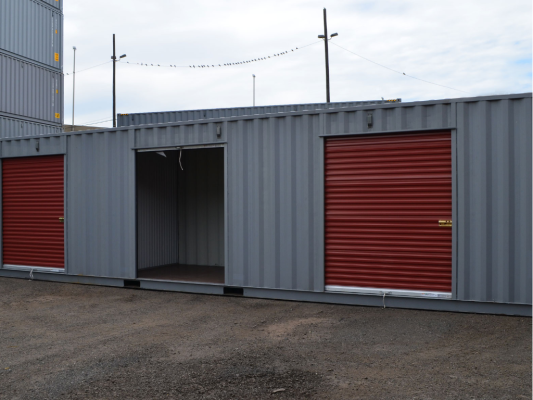Why Shipping Containers Are the Future of Eco-Friendly Architecture

In an era where climate change and sustainability have become pressing global issues, the architectural industry is being challenged to rethink traditional building methods. One innovative solution gaining traction is the use of shipping containers in construction. Once merely vessels for transporting goods, these robust metal boxes are being repurposed into homes, offices, and community spaces. This shift not only represents a creative approach to architecture but also signifies a move towards more sustainable building practices. Here’s why shipping containers are poised to become the future of eco-friendly architecture.
1. Sustainable Resource Utilization
The construction industry is notorious for its environmental impact, from the extraction of raw materials to the energy consumed during construction. Shipping containers provide an alternative that reduces waste and minimizes the use of new resources. By repurposing these containers, architects and builders can utilize existing materials, significantly lowering the carbon footprint associated with traditional construction methods. This practice aligns with the principles of circular economy, where resources are reused, repaired, and recycled to extend their lifecycle.
2. Reduced Construction Time
Traditional construction projects can take months or even years to complete, largely due to the need for extensive materials and labor. Shipping containers, on the other hand, can be transformed into livable spaces in a fraction of the time. With their modular design, these containers can be quickly assembled on-site, reducing labor costs and the environmental impact of prolonged construction. This rapid build time not only benefits developers but also minimizes disruption to the local environment and community.
3. Energy Efficiency
Energy efficiency is a critical factor in sustainable architecture, and shipping containers lend themselves well to this concept. Their metal structure can be easily insulated, allowing for effective temperature regulation with minimal energy consumption. Many container homes are designed to incorporate renewable energy sources, such as solar panels, which further enhances their sustainability. By utilizing energy-efficient appliances and smart technology, these homes can operate on a fraction of the energy required by conventional buildings.
4. Versatility and Adaptability
One of the most appealing aspects of shipping containers is their versatility. They can be configured in various ways to create unique living and working spaces, from single-unit homes to multi-story complexes. This adaptability allows architects to design structures that meet specific needs while minimizing waste. Additionally, shipping containers can be relocated easily, making them ideal for temporary installations, disaster relief efforts, or even as pop-up shops. This flexibility aligns well with the modern desire for dynamic and multifunctional spaces.
5. Affordability
The rising cost of housing is a significant concern worldwide, making affordable solutions more necessary than ever. Shipping container homes offer an economically viable alternative to traditional housing. The cost of purchasing and retrofitting a shipping container is generally lower than that of building a conventional home. This affordability extends to maintenance costs as well; the durable metal structure of containers is resistant to many of the common issues that plague traditional homes, such as termites and rot.
6. Aesthetic Appeal
While shipping containers are often associated with industrial design, they can be aesthetically pleasing when creatively repurposed. Many architects and designers have embraced the challenge of transforming these containers into stunning living spaces that reflect modern design principles. By incorporating large windows, green roofs, and open floor plans, container homes can offer both beauty and functionality. This innovative approach can also inspire others in the construction industry to consider alternative materials and designs.
7. Community Development
Beyond individual homes, shipping containers can play a significant role in community development. They can be used to create affordable housing projects, community centers, and even schools. Their modular nature allows for easy expansion as community needs evolve. This potential for scalable, eco-friendly developments can contribute to addressing urban housing crises while fostering sustainable communities.
Conclusion
As the world grapples with the challenges of climate change and resource depletion, shipping containers emerge as a compelling solution for eco-friendly architecture. Their sustainable resource utilization, energy efficiency, versatility, and affordability make them an attractive option for both builders and homeowners. By reimagining the way we construct our living and working environments, shipping containers not only provide a pathway toward sustainable architecture but also inspire a new generation of design that prioritizes the planet. As this trend continues to grow, it may well define the future of building, proving that innovative thinking can lead to a more sustainable and resilient world.

